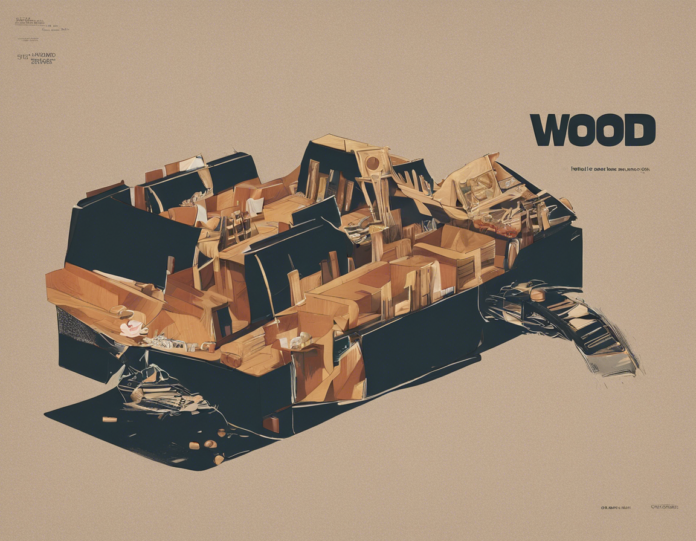Are you a movie buff who is fascinated by the intricate details of filmmaking? If so, you’ve likely heard the term “movie wood” being thrown around. But what exactly is movie wood, and why is it such an essential aspect of the film industry? Let’s delve into the fascinating world of movie wood and uncover its significance in creating the magic of cinema.
Understanding Movie Wood
Movie wood refers to the use of wood in various aspects of filmmaking, from set design and construction to props and furniture. Wood has been a staple material in the film industry for decades due to its versatility, durability, and aesthetic appeal. Whether it’s crafting elaborate sets for period dramas or creating intricate props for science fiction epics, wood plays a crucial role in bringing cinematic visions to life.
The Role of Wood in Set Design
When it comes to creating immersive and visually stunning film sets, wood is the go-to material for production designers and art directors. Its malleability allows for the construction of intricate and elaborate sets that transport audiences to different time periods, locations, and fictional worlds. From the rustic charm of a quaint countryside cottage to the futuristic architecture of a space station, wood can be manipulated and transformed to suit any creative vision.
Types of Wood Used in Filmmaking
Various types of wood are used in filmmaking, each with its unique characteristics and applications. Some of the most commonly used woods include:
- Pine: Prized for its affordability and ease of manipulation, pine is often used for constructing large set pieces and structures.
- Oak: Known for its strength and durability, oak is ideal for creating furniture, props, and intricate details on set.
- Mahogany: With its rich, reddish-brown hue, mahogany is frequently used for crafting luxurious and elegant set pieces.
- Birch: Lightweight and versatile, birch is a popular choice for creating props and small-scale set elements.
Each type of wood brings its own aesthetic qualities and practical benefits to the filmmaking process, allowing designers to achieve the desired look and feel for a particular project.
Sustainability and Eco-Friendly Practices
In recent years, there has been a growing emphasis on sustainability and eco-friendly practices in the film industry, including the use of responsibly sourced wood. Production companies are increasingly opting for reclaimed wood, recycled materials, and certified sustainable wood products to minimize their environmental impact. By prioritizing ethical sourcing and recycling initiatives, filmmakers can create visually stunning sets while minimizing waste and preserving natural resources for future generations.
The Art of Woodworking in Filmmaking
Woodworking is a skilled craft that plays a vital role in the production of film sets and props. Artisans and craftsmen with expertise in woodworking techniques bring creative visions to life through their meticulous craftsmanship and attention to detail. Whether it’s carving intricate designs on furniture, building realistic facades for buildings, or distressing wood to create an aged look, woodworking adds depth and authenticity to on-screen environments.
Iconic Examples of Movie Wood in Cinema
Over the years, numerous films have featured iconic uses of wood in their set designs and props, leaving a lasting impression on audiences. From the grandeur of the Great Hall in the Harry Potter series, constructed with towering wooden pillars and intricate carvings, to the whimsical charm of the Hobbit holes in The Lord of the Rings trilogy, crafted from reclaimed wood and natural materials, movie wood has helped shape the visual storytelling of some of cinema’s most beloved narratives.
FAQ
1. What are the benefits of using wood in filmmaking?
- Answer: Wood is versatile, durable, and aesthetically pleasing, making it ideal for creating immersive film sets and detailed props.
2. How can filmmakers ensure they are using sustainable wood products?
- Answer: By sourcing wood from certified sustainable providers, opting for reclaimed or recycled wood, and prioritizing eco-friendly practices in production design.
3. What woodworking techniques are commonly used in filmmaking?
- Answer: Woodworking techniques such as carving, distressing, staining, and finishing are essential for creating realistic and visually striking film sets and props.
4. Which films are known for their iconic use of wood in set design?
- Answer: Films like Harry Potter, The Lord of the Rings, and Pan’s Labyrinth are celebrated for their intricate and imaginative use of wood in creating fantastical worlds.
5. How has the use of wood in filmmaking evolved over time?
- Answer: From traditional handcrafted sets to cutting-edge digital effects, the role of wood in filmmaking has adapted to changing technologies while retaining its essential place in creating cinematic magic.
Whether you’re a filmmaker, designer, or simply a fan of movies, exploring the world of movie wood offers a glimpse into the artistry and craftsmanship that goes into creating cinematic masterpieces. From the humble beginnings of a raw timber to the elaborate sets that grace the silver screen, wood continues to be an essential tool in the hands of visionary storytellers who bring imagination to life.









